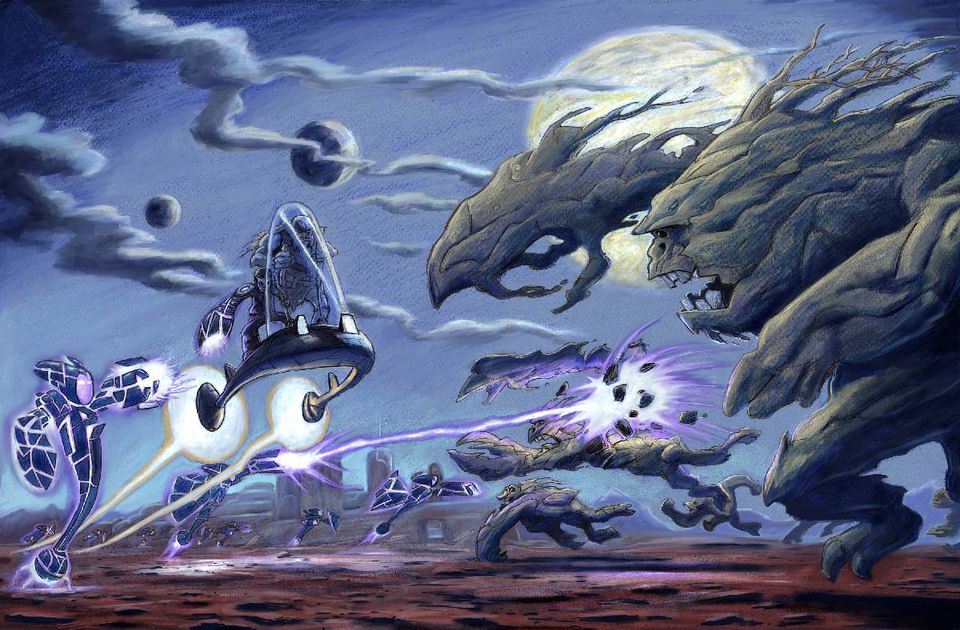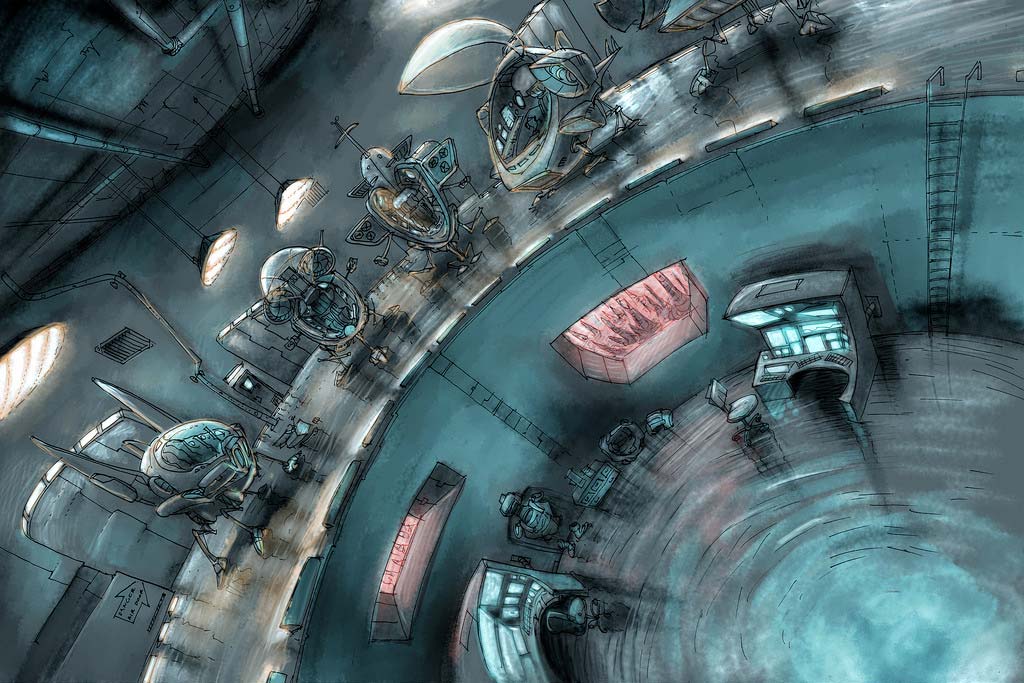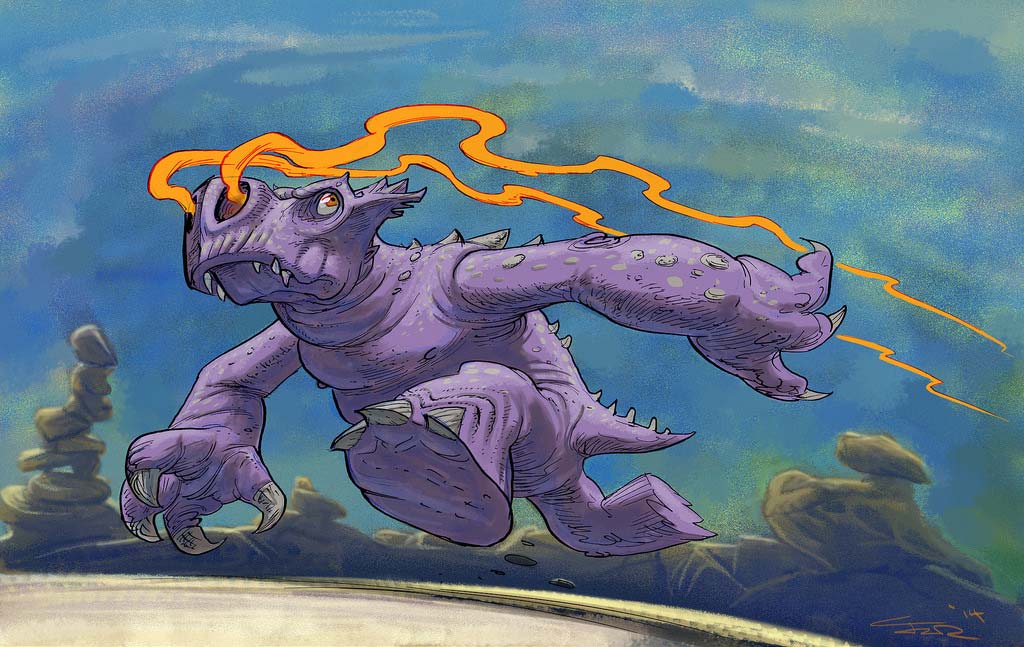Artist Spotlight: Joel Zain Rivers
February 25, 2020
Everyone’s work is deeply idiosyncratic: in our regular Spotlight segment we explore artists’ experiences and inspiration to understand what defines and inspires their unique styles.
Can you give us a brief background on yourself?
I have been drawing cartoons, comics, and monsters since I can remember. I attended a arts magnet high school in San Francisco in the 80’s called, Ruth Asawa San Francisco School of the Arts, (SOTA). I received a Bachelors of Fine Art from Humboldt State University, graduating in 1992. After being disenchanted with the idea of being an artist for a while, I worked on a short film/children’s book for a friend. Around that time I re-discovered comics, notably Allen Moore’s books. After trying and failing, I got a grant to self-publish my first series of comics. Lots of things happened after that, like partnering in a concept art company with 2 other artists while in Maine. Lately, I have worked as a web-comic artist for Edgar Rice Burroughs, Inc. and have done some recent storyboard projects.
What kind of influence does your location have on your career?
I now live in the desert southwest in the United States. There are not many opportunities for commercial artists here, so I rely on my network, clients, and contacts from elsewhere. This has made me more introspective, and I think more and more seriously about independent ventures and projects. It is less expensive to live here, and the cultures and landscapes are part of what drew me here and continue to inspire me. Also my roots are out here, so I feel at home.
What is your process like when combining traditional and digital methods?
I’m in my 40’s so traditional media is part of my ritual when creating art, sketching, or coming up with ideas or visual approaches. I love the ease and quickness of using Painter, ArtRage, or Sketchbook Pro, but the experiential and tactile reality of paper, pencil, ink, etc, and the randomness of mistakes, reactions to mistakes, and making them “work” is part of my process. When you can’t “undo” you make different choices.
Could you pick one piece of art that has made a lasting influence on you, and if so why?
Well, I can say that the first time I saw a comic drawn by Joe Kubert, a Tarzan comic that was fighting a Pterodactyl, that moment crystallized. I loved dinosaurs and I loved comics as a kid, but in that moment I saw you could combine things. You could make a surreal world where there were no rules limiting you. That has stayed with me. Also the work of Moebius - the great Jean Giraud.
What skills or techniques are you working to try improve at the moment?
I am always working on anatomy and composition, those are always challenges. I find just drawing every morning to get the bad drawings out, so to speak, is mostly the key. Also good reference material is absolutely crucial.
Can you give our readers a tip or trick you have come across that has made your work a lot easier?
Use as many layers of preliminary drawing as you need. Draw a layer, then bring it to 30% visible and draw another layer on top. Just keep going until it clicks. I recently added, using values, a flat gray for shadows BEFORE I do final lines in a digital comic page. This really helps with proportion, composition, and clothing.
How can people who are interested in discovering more of your work find it?
Scriba is a revolutionary digital stylus that is ergonomically designed to comfortably fit your hand and uses unique Squeeze-Motion technology. Order here.
Articles

In the period since COVID forced many of us back home and out of the office, remote work has become the new norm for many. The flexibility of working from home, especially for those with small children, is very compelling, but making a productive workspace is more than setting up a desk in the spare room. More people are seeking to create functional and comfortable workspaces in their homes, however, it can be difficult to strike the right balance between a professional office space and a cosy home environment. Here are some tips for designing a home workspace that meets both of these needs: Dedicate a specific area for work Designating a specific area for work is essential for separating work from leisure time. This could be a separate room or just a corner of a room. It is important to make sure that the workspace is free from distractions and clutter, as this will help you stay focused and productive. Choose the right furniture Ergonomic furniture is key to a comfortable and productive workspace. Invest in a comfortable chair, a desk that is the right height, and a good-quality mouse and keyboard. If you are prone to back pain, consider a standing desk. Add personal touches Just because your workspace should be functional, doesn’t mean it can’t be personal. Add photos, plants, and other personal items to make the space feel like your own. This will help create a sense of comfort and make you feel at home in your workspace. Good lighting Good lighting is essential for a comfortable workspace. If possible, place your desk near a window for natural light. If not, invest in a high-quality desk lamp to provide bright, even light. Keep it organised An organised workspace will help you stay productive and focused. Use desk organisers, filing cabinets, and other tools to keep your work area free from clutter. A clean and organised workspace will also help you start each day with a clear mind. Consider your work style Think about the type of work you do and how you like to work. If you prefer a minimalist workspace, opt for a simple desk and a few basic supplies. If you need space for multiple screens and other technology, make sure you have enough room to work comfortably. Take breaks It’s important to take breaks throughout the day to avoid burnout. Step away from your desk, go for a walk, or do some stretching exercises to clear your mind and recharge.













